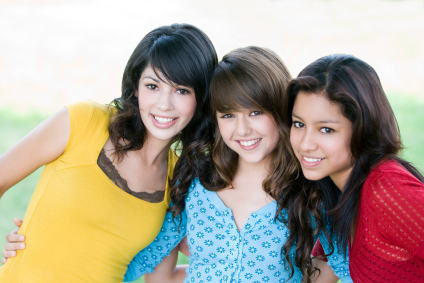 There is a common misconception that bullying is just a part of growing up. The reality is children who bully and those who are bullied can experience negative health outcomes that may last into adulthood. Bullying, like other forms of violence, is about power and control, and that power can be based on popularity, size and strength and intellect.
There is a common misconception that bullying is just a part of growing up. The reality is children who bully and those who are bullied can experience negative health outcomes that may last into adulthood. Bullying, like other forms of violence, is about power and control, and that power can be based on popularity, size and strength and intellect.
Staff from our Bureau of Women’s and Children’s Health traveled around the state in 2015 to hear the concerns of Arizonans bullying. We learned through the 2015 Arizona Youth Survey that more than 20 percent of teens in Arizona between 9th and 12th grade reported having been harassed or bullied on school property at least once or twice in the previous 12 months.
To help communities understand the impact and to find solutions to prevent bullying, our Bureau of Women’s and Children’s Health is conducting a survey to assess what bullying prevention efforts are active in Arizona. We welcome anyone who is aware of any bullying prevention programs to complete the survey. Our Health Improvement Plan includes bullying prevention as a focus of the Maternal and Child Health workgroup.
Other findings from the 2015 Arizona Youth Survey are:
- Fourteen percent of teens between 9th and 12th grade reported being electronically bullied, such as through e-mail, chat rooms, instant messaging, web sites, or text messaging.
- Nine percent of students reported bullying somebody else electronically at least one or twice in the last 12 months.
- Thirteen percent of students reported being the ones harassing or bullying others on school property at least once or twice in the last 12 months.
- Children with Special Health Needs, LGBT youth and youth of color or various religions may be at increased risk of being bullied.
It’s important for parents and other adults who work or care for kids to have conversations with kids about what bullying is and how they can stand up to bullies safely. It’s also essential that adults model kind and respectful behavior when they interact with others. You can learn more about bullying and what schools and communities can do to prevent it on the Stop Bullying website.












My daughter goes through that stuff all the time. She likes to wear boy’s clothes, loves a suit and tie, and keeps her hair short. Her teachers work very hard to help her and help the other kids understand that she is just a girl who looks differently than they expect a girl to look. It happens everywhere though. You don’t realize how often people mention gender until they are wrong all the time. Wait staff, store clerks, people on the street. It’s always gentleman, young man, buddy, your son, the boys (she has a brother) everywhere we go. Correcting people sucks because of they are all “OH MY GOD REALLY” or just really awkward after.